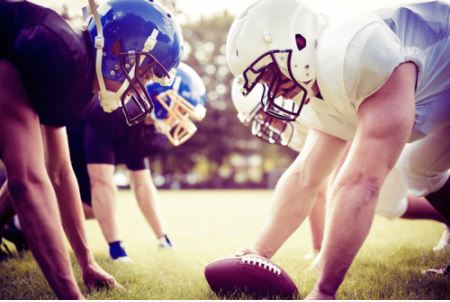
Summer is finally here and soon schools across the country will be starting sports tryouts, workouts, and practices. Even though summer has just begun, student-athletes will soon begin to get themselves ready for the start of the fall sports season. Sports, such as football, field hockey, soccer, cross-country, and cheerleading cause some of the highest injury rates in scholastic sports. The dangers of beginning re-conditioning, the short preseason of fall sports and hot, humid weather may quickly cause injuries and illnesses.
According to the Centers for Disease Control and Prevention (CDC), high school athletics account for an estimated two million injuries, 500,000 doctor visits, and 30,000 hospitalizations each year. Student-athletes are injuring themselves more often than ever and the types of injuries and their severity are increasing. More youth athletes are suffering from more injuries today than ever before. Overuse and serious acute injuries are becoming more common. As the intensity and demands of scholastic sports continue to rise, young athletes are more vulnerable than ever to these types of injuries.
An estimated 40 million students throughout the United States are involved in athletic activities both in and out of school each year. One out of ten students will end up with some type of injury or illness. Most of these injuries involve the lower extremities as bruises, blisters, and scrapes. Muscle strains and joint sprains, although occurring at a lesser frequency, are still a big concern. With an estimated 300, 000 sport-related traumatic brain injuries occurring annually, screening is critical. Fatigue and dehydration from the summer heat and humidity play a role in sports injury, while poor choices in clothing, especially footwear, can also be a factor.
Prior to leaving for camp, athletes should have pre-participation physical examinations and have completed required questionnaires about existing medical conditions and medications. Any required protective equipment should be checked for proper fit and condition.
Coaches and athletic trainers should have proper training and education on relative health and safety issues. They should also have CPR, automated external defibrillator (AED), and first aid training.
Summer sports camps should have an emergency action plan (EAP) specific for every practice and game facility. These plans are developed to manage serious and/or potentially life-threatening injuries and should be reviewed by the athletic trainer or local emergency medical service. Individual assignments, emergency equipment, and supplies need to be included.
If an athletic trainer is not employed by the camp, other qualified individuals need to be present to provide care.
Coaches should assure that the training drills they use are safe and free of unforeseen hazards. A school on Long Island was recently sued for a seven-figure sum due to the death of a student participating in a military-style training drill. The student was participating in an offseason football training camp when a massive log he and several other teammates were carrying fell and hit him on the head causing a fatal injury. The drive to get better and “be your best” can sometimes result in these types of serious injuries. School-aged students should not be subject to the same intense and dangerous military-style boot camps as the armed forces. It is up to the Camp Directors, Athletic Directors, coaches, and trainers to work in concert to review proposed training techniques prior to putting them into action, especially in light of the hot and humid weather conditions common to summer camps and training.
Another very important aspect of summer sports camps is ownership. Who is running the camp? Are they an independent sports camp with their own tax ID and their own insurance or is it a camp run and operated by a school with school coaches and trainers. OR is it nebulous as to whose camp it is? Coaches often run their summer camps for their own players, on school grounds and under the umbrella of the school while the school and students (parents) may not be aware of the relationship putting the school’s liability at risk. If coaches are running summer camps and using school grounds (separate from regular team practices) then the coach must have separate and significant insurance coverage and complete a facilities-use form with an indemnification clause, from the school. If coaches wish to run a summer camp for their team it must be approved by the AD and meet all federal, state athletic association requirements in terms of safety, what types of activities are acceptable and the number of practices (if any) allowed.
Below is a link to the New York State Athletic Association website providing guidance on summer camps especially taking into account a return to play following COVID-19 restrictions over the last 1.5 years.
http://nysphsaa.org/Portals/0/COVID%2019/NYSPHSAA%20Summer%20Guidance%20061220.pdf
Be sure to contact us with any questions relating to summer camps both for Higher Ed and K-12.
To download the PDF version of this article, please click here.
